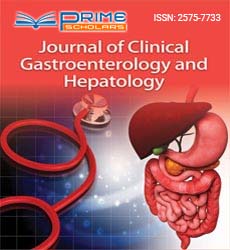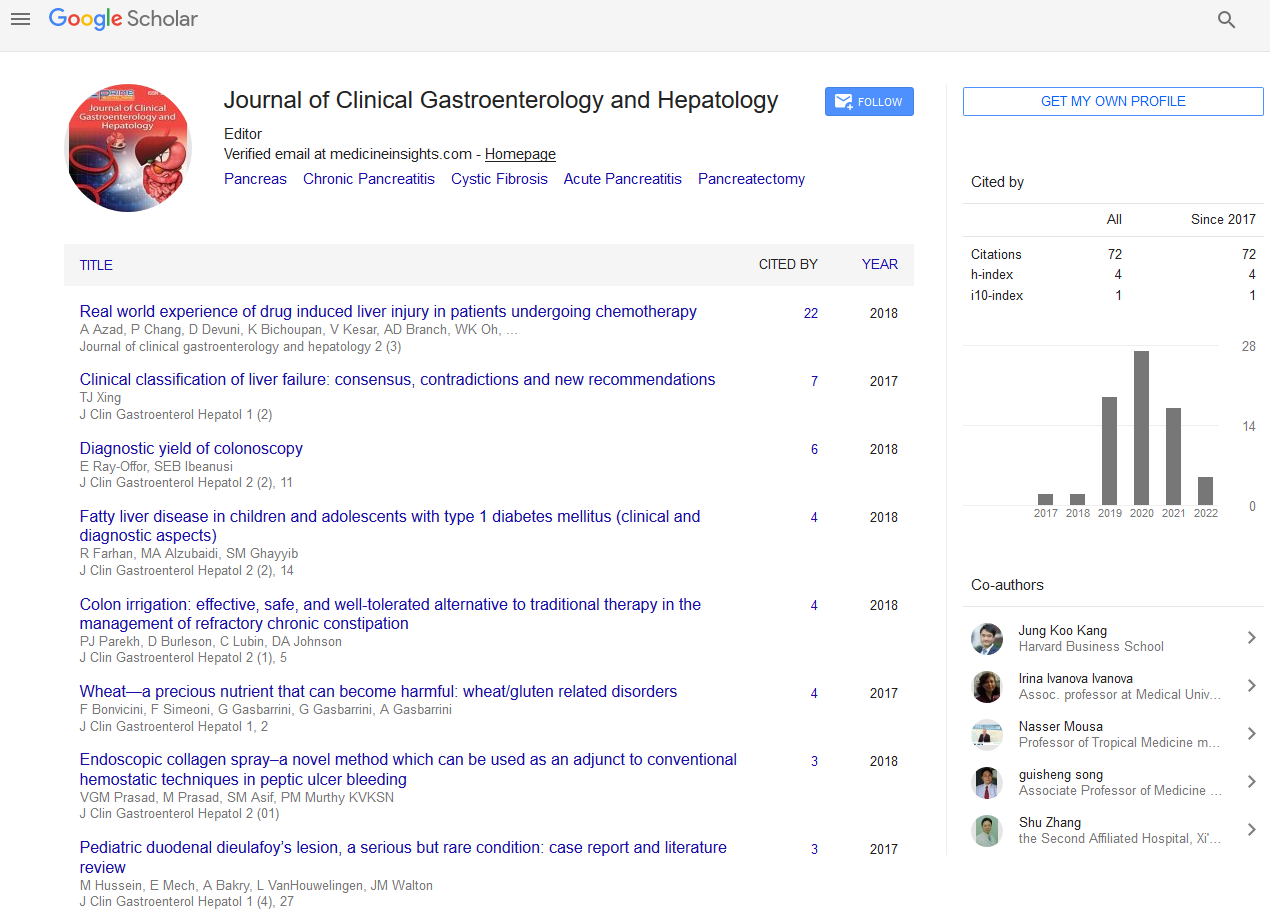Short Communication - (2023) Volume 7, Issue 3
Despite the Fact that Cirrhosis can’t Normally be Restored it Tends to be Overseen
Fabio Marra*
Department of Human Nutrition, University of Southampton, UK
*Correspondence:
Fabio Marra,
Department of Human Nutrition, University of Southampton,
UK,
Email:
Received: 31-May-2023, Manuscript No. IPJCGH-23-16793;
Editor assigned: 02-Jun-2023, Pre QC No. IPJCGH-23-16793;
Reviewed: 16-Jun-2023, QC No. IPJCGH-23-16793;
Revised: 21-Jun-2023, Manuscript No. IPJCGH-23-16793;
Published:
28-Jun-2023, DOI: 10.36648/ipjcgh.7.3.22
Introduction
The liver suffers scarring and permanent damage as a result
of cirrhosis. Scar tissue replaces healthy liver tissue and prevents
your liver from functioning normally. Your liver begins to
deteriorate as cirrhosis worsens. Long haul, on-going liver illness
is cirrhosis. Hepatitis and other infections, as well as liquor
misuse, are the most widely recognized causes. It can also be
brought on by other health problems. In most cases, the liver
damage cannot be changed. Although cirrhosis cannot usually
be cured, it can be managed and prevented from getting worse
through treatment. A many individuals with cirrhosis can live
without a liver transfer for quite a while and feel fine. This is
because the liver can still function fairly well even when it is
severely damaged [1,2].
Description
Cirrhosis is divided into two categories: redressed and decompensated.
The presence of fewer white platelets and platelets
in the blood may be the most obvious sign of cirrhosis. Blood
can be redirected to smaller veins by portal hypertension,
which can lead to bleeding. Due to the additional pressure,
these smaller veins might burst, causing severe bleeding. The
following are early cirrhosis symptoms and signs: Reduced appetite.
Nausea, weakness, or exhaustion caused by untreated
cirrhosis can lead to liver failure and death, but cirrhosis is typically
not considered a sudden death. In general, there is some
evidence to suggest that people with greasy liver disease are
more likely to pass away suddenly. Berries, cruciferous vegetables,
beans, entire grains, nuts, and greasy fish are food varieties
that are really great for the liver. Green tea and coffee
have antioxidants that are good for the liver. Class A cirrhosis
patients typically live 15 to 20 years, which is the best possible
prognosis. Patients with Class B cirrhosis have a 6 to 10-year
life expectancy and lead healthy lives. As a result, these people
have plenty of time to think about more advanced treatments
like a liver transplant. It can be depressing to receive a diagnosis
of liver cirrhosis, which is why early detection and prevention
are so important. It is feasible to turn around cirrhosis
and return to ordinary life whenever got early. Previously, liver
cirrhosis was seen as an irreversible quirk. However, numerous
exploratory data have demonstrated that liver fibrosis can be
reversed. On repeated biopsy tests, various clinical investigations
have also revealed a relapse of fibrosis and an inversion of
cirrhosis. Without a working liver, one can’t get by. If your liver
stops functioning as it should, you might need a transplant. If
you have a chronic liver disease that is in its final stages, a liver
transplant may be recommended. The most obvious symptoms
of cirrhosis include: weight loss due to weakness, exhaustion,
nausea, vomiting, and a lack of appetite. Palm-sized red spots
and tiny, insect-like veins on your skin are angiomas above your
abdomen [3,4].
Conclusion
At the cirrhosis stage, you may experience additional liver damage
symptoms like jaundice, weakness, fatigue, weight loss, abdominal
bloating, and edema in your extremities. A liver transplant
may be recommended if you have a chronic liver disease
that is in its final stages. Among the most obvious signs of cirrhosis
are: deficiency and depletion bloating, vomiting, and a
lack of hunger that led to weight loss.
Acknowledgement
None
Conflict Of Interest
The authors declare that they have no conflict of interest.
References
- Lin X, Wang Y, Liu Z, Lin S (2022) Intestinal strictures in Crohn's disease: A 2021 update. Therap Adv Gastroenterol. 15:17562848221104951.
[Crossref] [Google Scholar] [PubMed]
- Hoesli SR, Bruggen MC, Feldmeyer L, Simon HU, Simon D (2021) Eosinophils in skin diseases. Semin Immunopathol. 43(3):393-409.
[Crossref] [Google Scholar] [PubMed]
- Hassen G, Singh A, Belete G, Jain N (2022) Nonalcoholic fatty liver disease: An emerging modern-day risk factor for cardiovascular disease. Cureus. 14(5):e25495.
[Crossref] [Google Scholar] [PubMed]
- Reshetnyak VI (2015) Primary biliary cirrhosis: Clinical and laboratory criteria for its diagnosis. World J Gastroenterol. 21(25):7683-708.
[Crossref] [Google Scholar] [PubMed]
Citation: Marra F (2023) Despite the Fact that Cirrhosis canâ??t Normally be Restored it Tends to be Overseen. J Clin Gastroenterol Hepatol. 7:22.
Copyright: ©2023 Marra F. This is an open-access article distributed under the terms of the Creative Commons Attribution License, which permits unrestricted use, distribution, and reproduction in any medium, provided the original author and source are credited.

